Travelling to Norway in the winter isn’t for the unprepared. But if you get it right, you’ll experience stunning snowy landscapes, cozy cafes, and perhaps even a glimpse of the northern lights. Follow these seven essential tips for a truly unforgettable trip.
When you think of a Scandinavian winter, what comes to mind? Endless darkness? Bitter cold? Well, you're not entirely wrong—but here’s the thing: life goes on in the Norwegian winter, and it’s absolutely worth experiencing.
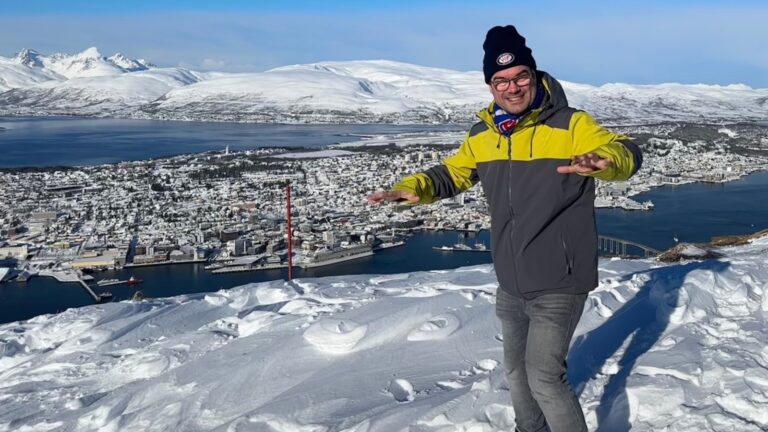
I’m David Nikel, founder of Life in Norway, and I travel extensively around Norway year-round. In fact, winter travel is my absolute favourite time to travel, and some of my most popular YouTube videos have been filmed in winter.
My favourite winter memory so far was undoubtedly taking the Norweigan coastal voyage back in January-February 2024. We saw the very best and very worst of what Norway has to offer in the winter. Check out the video to see the full story!
Whether it’s on a cruise to see the snowy landscapes and hunt the northern lights, or a city break to see the museums with fewer crowds, the winter in Norway is a great time to visit, as long as you’re prepared.
Today, I’ll share my top tips for making the most of your trip to Norway in winter. Ready? Then let’s get going.
1. Know When to Visit
First, know when you’re coming. Norway’s winter is not just one season—it’s a tale of two winters.
Late November to early January bring the ‘dark winter,’ where daylight is scarce, and snow isn’t always guaranteed. Instead, you’ll find rainy streets in cities like Bergen or Oslo, but they’re lit up with festive lights and bustling Christmas markets.
There’s a beauty to this darkness. The soft glow of candles, the charm of the blue hour, and the chance to slow down and enjoy the coziness of a Norwegian winter make this a magical time to visit.
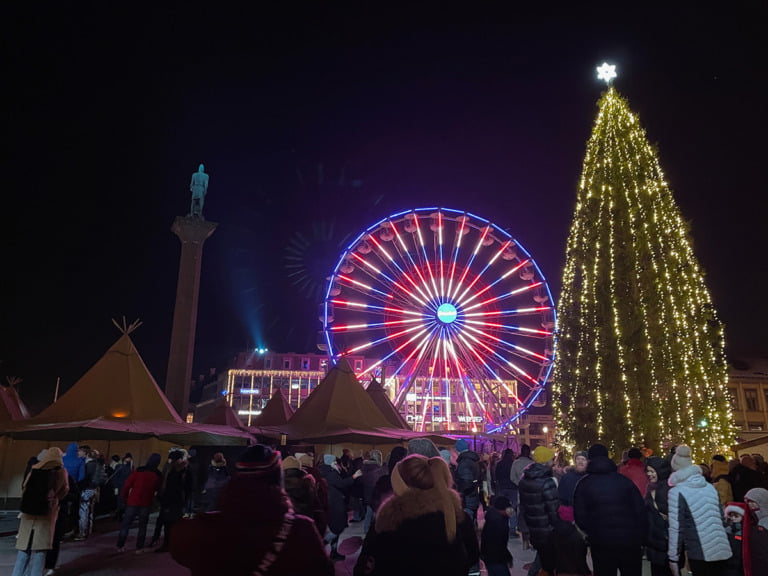
If you’re dreaming of snow-covered landscapes, late January to early April is what I like to call the ‘white winter.’
This is when Norway transforms into a true winter wonderland, with bright days, crisp air, and blankets of snow in much of the country. Whether you’re skiing, sledding, or just strolling through a snowy forest, this is the season where winter truly shines.
On a recent Northern Lights cruise in October, many people on board were surprised to find there wasn’t any snow. But October is smack bang in the middle of autumn. Snow typically arrives later, especially in coastal areas.
If snow is a must for your trip, aim for February or March when the chances are highest, and the days are beginning to lengthen.
📌 Key takeaway: Norway’s winter is not one-size-fits-all, so plan accordingly.
2. Dress for Success
Norwegians say, “There’s no bad weather, only bad clothing.” And they mean it. Dressing for winter in Norway is all about layers, and your secret weapon is wool.
Start with a base layer of wool thermal underwear—this is your first line of defense against the cold. Wool is ideal because it keeps you warm even if it gets wet, unlike cotton, which can leave you shivering.
Next, add a wool sweater or mid-layer. This traps heat close to your body while allowing moisture to escape. On top, wear a windproof and waterproof jacket to shield you from the elements.
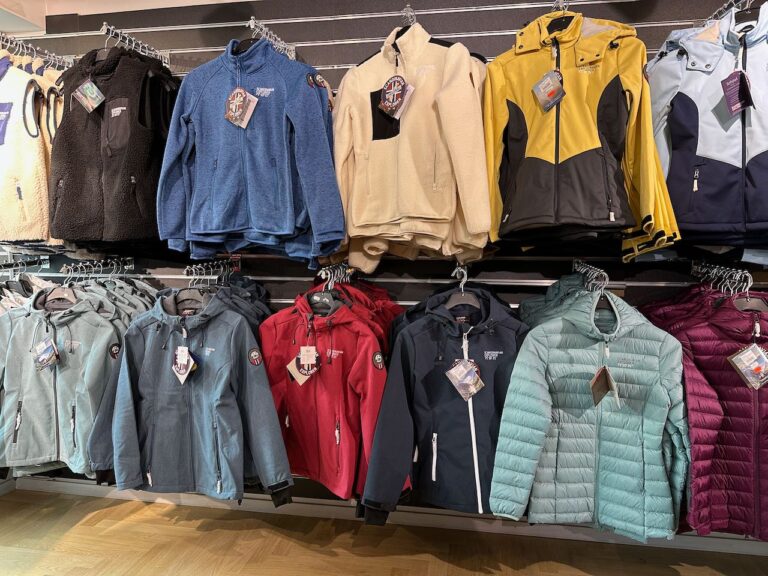
If you’re planning to spend extended time outdoors, look for down or synthetic insulation in your outerwear for added warmth. Personally, I wear mostly Norrøna gear. Yes, it’s pricey. But it works!
Your lower half deserves just as much attention. Wool socks are an absolute must—they’ll keep your feet warm even on the iciest days. Pair them with insulated, waterproof boots to ensure you stay dry and comfortable.
Don’t forget the accessories. A wool hat, scarf or neck gaiter, and gloves will protect your extremities. Mittens are often warmer than gloves, and if you opt for wool liners underneath, you’ll have an unbeatable combination.
📌 Key takeaway: Invest in high-quality wool socks and gloves. It’s worth it!
3. Be Prepared for a Northern Lights Hunt
I see the northern lights from time to time, even living as far south as I do in Trondheim. I never tire of watching nature’s dancing light show.
Over the past few years, I’ve joined several northern lights cruises. On them, I’ve gained a real insight into other people’s expectations of the aurora borealis.
My best advice? Read this article on what the northern lights really look like, and take the advice on board!
Modern cameras make the light look much more vivid than the human eye sees, in exactly the same way as all nighttime photography does. Take a photo in a city at night, and look at what the camera captures.
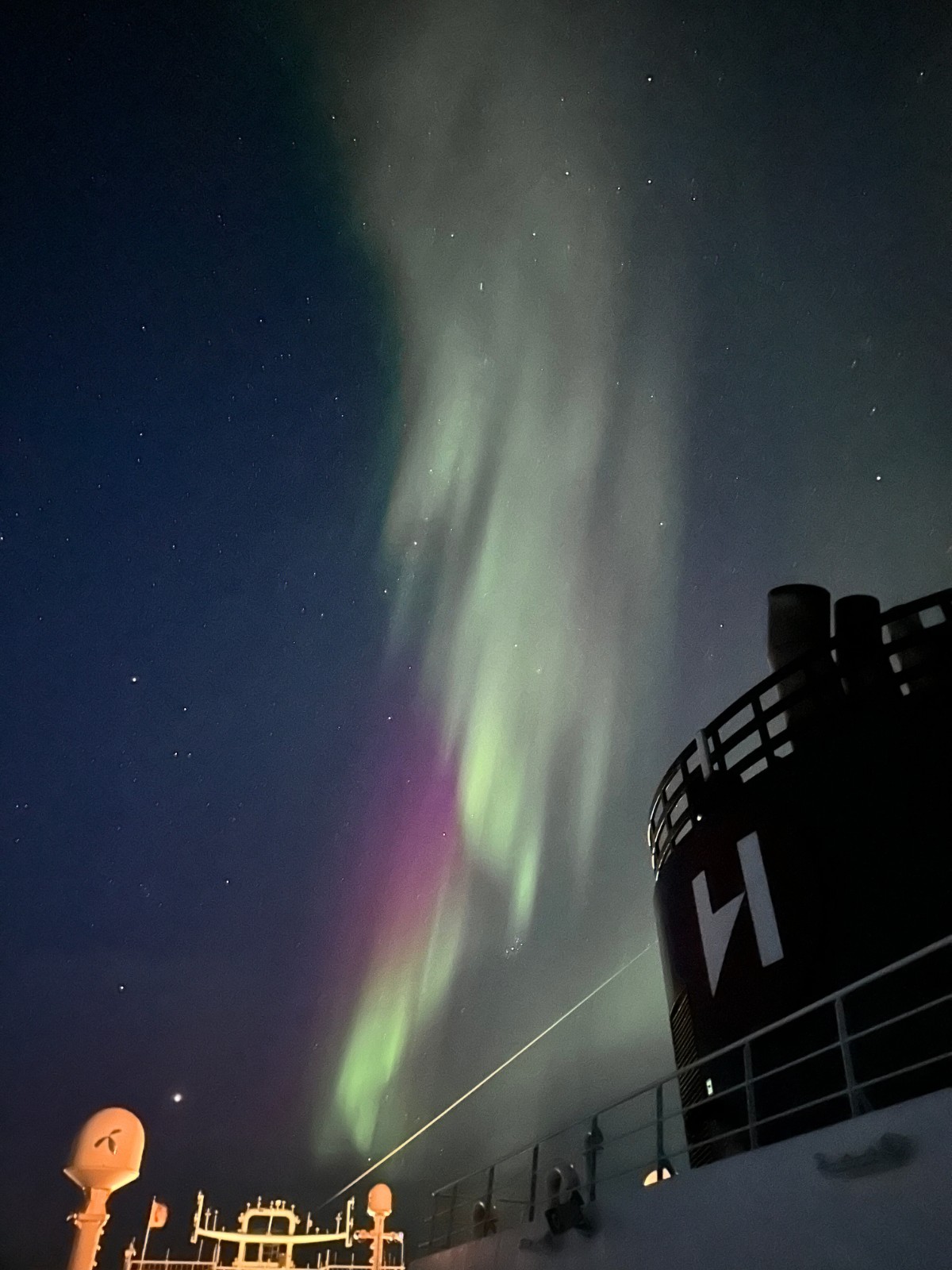
Understand that you need to find a truly dark place, and that your eyes will need time to adjust to the darkness. You shouldn’t expect to peek your head outside and see incredible dancing colours overhead—although yes, it can happen like that occasionally!
Dressing appropriately for an aurora hunt is essential. Many tours take you a long way inland, where temperatures can be significantly colder. Also, you might be standing in the cold for a long time, with limited facilities available to warm up.
Protect your extremities—head, hands, feet—as well as you can, doubling up on things like gloves and socks. Also protect your technology, especially spare batteries or power banks. They can deplete rapidly in the extreme cold.
📌 Key takeaway: The northern lights in person aren’t as vivid as photographs, but that doesn’t make it any less magical.
4. Learn How to Safely Walk on Ice
Let’s talk about ice. Walking on it? Not recommended. When I first moved to Norway, I thought ice was just, well, ice. I quickly learned there are many kinds—and some are worse than others. The absolute worst is what’s called “soapy ice.”
This happens when the temperature hovers around freezing: it rains, freezes, then rains again, creating a slick, almost oily surface that’s impossible to walk on. It’s like nature’s way of saying, “Don’t even try!”
In Norwegian cities, paths are often treated with grit, which means they can still be slippery, especially in these tricky conditions. To stay safe, grab a pair of detachable ice grips for your shoes, known as ‘brodder’ in Norwegian.
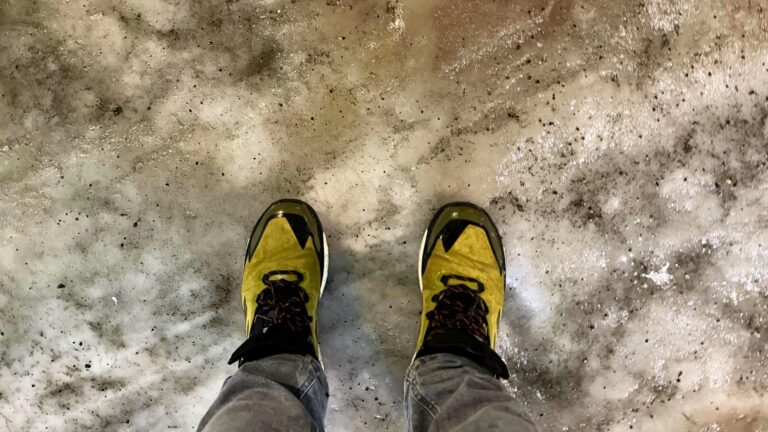
These little lifesavers clip onto your boots and give you extra traction, turning treacherous surfaces into something manageable. You can find them at most supermarkets or outdoor shops in Norway, and they’re worth every krone.
As I make clear in my article on how to walk on ice in Norway, the best strategy is to simply avoid. But sometimes it’s not possible. So, read that article, invest in some detachable grips, and, hopefully, you’ll be good to go.
📌 Key takeaway: Don’t take chances. It’s better to slide down a hill on a sled than on your backside.
5. Embrace the Darkness
Winter in Norway means limited daylight, especially in December and January. But don’t make the mistake of thinking the adventure ends when the sun sets—because in Norway, the darkness itself is part of the magic.
During the few hours of daylight, make the most of the breathtaking scenery. Whether it’s a crisp winter morning where the low sun casts a golden glow over snowy mountains or the magical blue hour just after sunset, these moments create some of the most stunning landscapes you’ll ever see.
This soft, diffused light is perfect for photography, turning fjords, forests, and frozen lakes into something straight out of a fairy tale.
But as night falls, the real enchantment begins. Winter’s darkness creates the perfect conditions for seeing the Northern Lights dance across the sky—one of the most unforgettable experiences Norway has to offer.
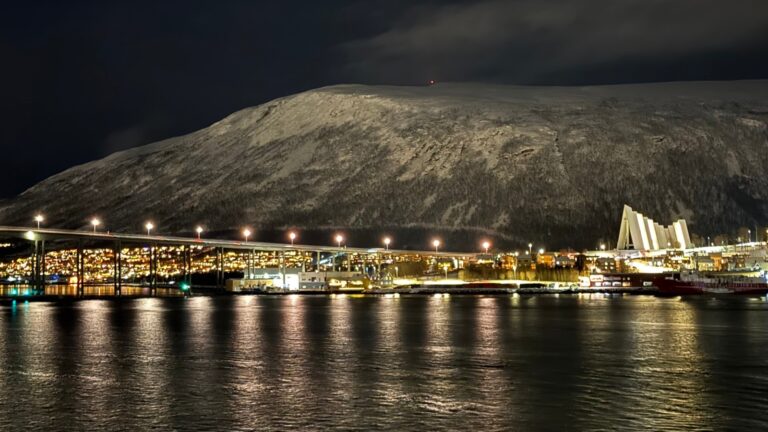
And if you think outdoor activities are only for the daytime, think again. Dog sledding at night is an incredible experience, where the eerie glow of moonlight on the snow, combined with the soft padding of paws on ice, makes you feel like you’ve stepped into another world.
Some excursions even take you out to wilderness camps, where you can sit by a crackling fire with a warm drink, watching for a glimpse of the aurora overhead.
For those who prefer to stay indoors, Norway’s cozy cafés, world-class museums, and intimate restaurants provide the perfect places to escape the cold.Winter evenings invite you to embrace koselig—the Norwegian concept of coziness and contentment.
📌 Key takeaway: Darkness doesn’t mean the fun stops—it’s when some of Norway’s most magical moments happen.
6. Make the Most of Winter Activities
Norway is a playground in the winter. You don’t have to get active, but if you do, you’ll be truly embracing the Scandinavian way of life during this time of the year.
Dog sledding in Norway is a hugely popular activity and should be booked well in advance. Visits to the camps where the dogs live are also enjoyable, even if you don’t join a sled trip.
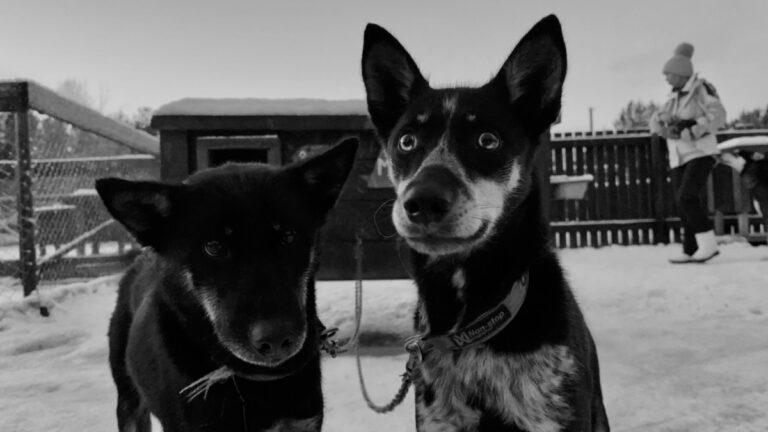
Other popular activities include snowshoeing or even cross-country skiing. You don’t have to be an expert—most resorts and ski centers offer beginner lessons. If you’re visiting cities, check out local ice rinks—often outdoors.
For a taste of the fjords without worrying about icy roads, take the Flåm Railway from Bergen. The scenery is truly spectacular in winter, and—unlike summer—you might have the train virtually to yourself.
📌 Key takeaway: Embrace the unique opportunities the winter season provides.
7. Adopt a Flexible Attitude
Norway’s authorities are well prepared for winter, keeping roads, railways, and airports running smoothly even in severe weather. However, nature still has the final say, and storms, heavy snowfall, or icy conditions can sometimes cause delays or cancellations.
The key to a stress-free winter trip is flexibility—be prepared for last-minute changes to schedules, and always have a backup plan.
Planning ahead is essential, especially when it comes to daylight hours. With shorter days in the depths of winter, making the most of available light is crucial for sightseeing and outdoor activities.
Websites and apps like Yr.no (Norway’s go-to weather forecast, and available in English!) will help you track conditions, while En Tur is great for checking public transport schedules. If you're traveling in rural areas, remember that some attractions may have shorter winter opening hours, so always check in advance.
By staying adaptable and informed, you’ll avoid unnecessary frustration and enjoy a smooth, memorable Norwegian winter adventure.
📌 Key takeaway: With preparation and a flexible mindset, you’ll navigate the Norwegian winter like a local.
Norway in the winter is a season like no other—yes, it’s dark, cold, and icy, but it’s also cozy, beautiful, and full of adventure. So, dress warmly, embrace the coziness, and get ready for an unforgettable experience.

